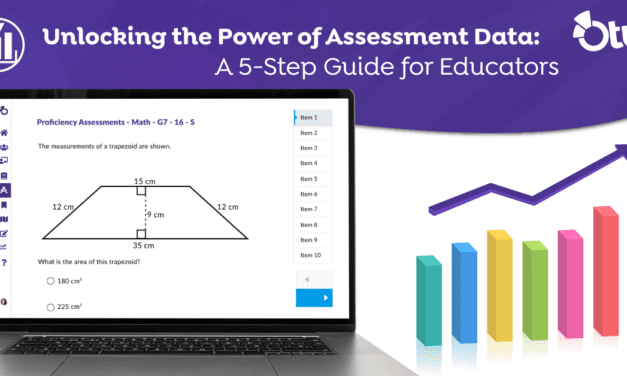Author’s Note: We love Google! To see all of the ways in which Otus leverages Google and allows users to expand their use of Google Apps for Education, click here. Keep in mind, your teachers can continue using Google Classroom with Otus!
Teachers who use Google Classroom enjoy its ease-of-use and requires very little setup in order to begin using it. Additionally, since Google is pervasive in every area of our lives, it is very easy to stay within their ecosystem because it’s comfortable.
As pervasive as Google Classroom is in K-12 classrooms, it often times must be supplemented by other tools, extensions, and plug-ins that may not provide the most efficient workflow for the way in which teachers work.
Additionally, K-12 families and school leaders can best support teachers and students when they have some visibility into student learning and growth over time.
With that, we made a list of the top 5 differences between Otus and Google Classroom.
The Top 5 Differences Between Otus and Google Classroom
1. Integrations
Otus is able to integrate with many of the systems that your school district already uses. Otus allows teachers to have all of their tools in one place. You can keep your classes in sync with your student information system. With Otus, grades seamlessly flow from your SIS (Infinite Campus, PowerSchool, and Skyward (coming soon). Users can import data from third-party assessments (i.e. SBAC, NWEA, Renaissance, iReady, etc.) as well as incorporate LTI resources from your district curriculum.
2. Points and Standards Gradebooks for Students, Teachers, School Leaders, and Families
Not every school uses a single grading scale for all grades. More and more K-12 school districts are implementing initiatives like standards-based grading. With Otus, school districts can create unique grading scales for each grade. You can also share point or standards gradebooks with students, administrators, teachers, and families. This ensures that student performance is reported in ways that are consistent with today’s instructional initiatives.
3. Classroom Management Tools
Otus is much more than a learning management system. Otus allows educators to text students and families, maintain communication logs, and track student recognition points for behaviors. In addition, users can take attendance, understand student strengths and passions, and streamline the ways in which teachers manage every facet of their day.
4. Engaging Assessments Aligned to Standards
While multiple choice, true/false, and short answer questions are great for certain learning situations, today’s educators want to provide students with more authentic measures of learning. Otus offers a wide variety of K-12 assessment options for teachers including an assessment item bank that is pre-aligned to state learning standards.
5. Actionable Data
In order for teachers to be able to leverage student data that typically exists in disconnected tools, it is critical that the data is accessible and actionable by teachers. Otus provide educators with access to high-stakes assessment data, benchmark data, common assessment data, and data that has been gathered using all of the other tools that exist within Otus. Now, data can truly be used to inform instruction.
Google is changing the ways in which teachers work. Be sure to learn how Otus leverages all of the things you love about Google to help streamline your workflows.





